Category: Scientific Exploration
Pig’s Heart Beating Inside Human
12, Jan 2022

Why in News?
- Recently, doctors Transplanted a pig heart into a patient in a last effort to save his life, in Maryland hospital in USA. It was done for the first time in the history of medical.
About the News:
- The patient is doing well three days after this highly experimental surgery.
- This marks a significant step in the decades-long debate on using animal organs for life-saving transplants. However, it is too soon to know, if the operation will work.
- As per Doctors at University of Maryland Medical Center, transplant highlighted that heart from a genetically modified animal can function in human body, without immediate Rejection.
Who was the Patient?
- The patient was David Bennett aged 57. He knew there was no guarantee of whether the experiment would work. But he was ready for the operation because he was dying and was ineligible for a Human Heart Transplant.
Why this Experiment was Conducted?
- There is a huge shortage of human organs, which are donated for transplant.
- This drives scientists to figure out how to use animal organs for transplant instead.
- In 2021, there were just around 3,800 heart transplants in the U.S. so, if this experiment works, there will be endless supply of these organs from animals for patients.
How about Prior Attempts?
- Prior attempts of such transplants have failed, largely. This is because, patients’ bodies rapidly rejected the Animal Organ. For instance in 1984, Baby Fae, who was a dying infant, lived for 21 days with a Baboon Heart.
How was the Recent Transplant Different?
- In the recent transplant, Maryland surgeons used a heart from a pig after it underwent Gene-Editing in a bid to remove a sugar in its cells which is Responsible for hyper-fast organ Rejection.
About Xenotransplantation:
- Xenotransplantation or heterologous transplant, is the transplantation of living cells, organs or tissues from one species to another. Such cells, organs or tissues are called xenografts or xenotransplants.
- The technique of Xenotransplantation of human tumour cells into Immunocompromised mice is often used in Pre-Clinical Oncology Research.
HYDROGEN FUEL
28, Apr 2020
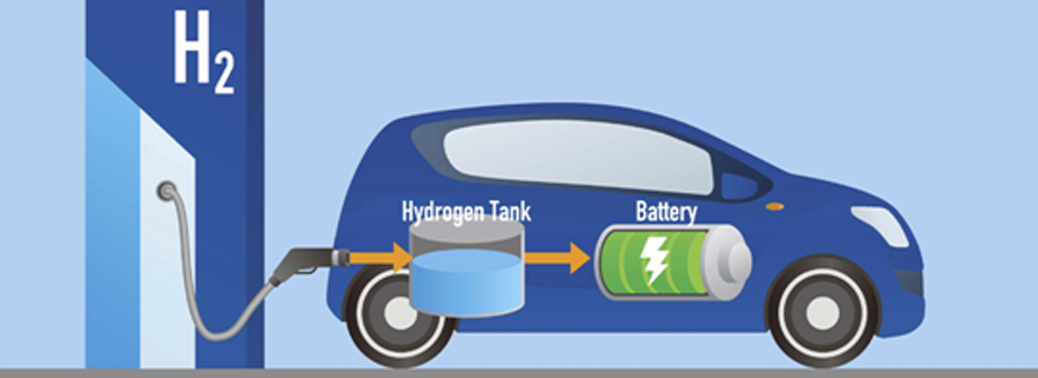
Context:
- Recently, the NTPC Ltd and a central PSU under Ministry of Power, has invited Global Expression of Interest (EoI) to provide 10 Hydrogen Fuel Cell (FC) based electric buses and an equal number of Hydrogen Fuel Cell based electric cars in Leh and Delhi.
About Hydrogen:
- Hydrogen is the lightest and first element on the periodic table. Since the weight of hydrogen is less than air, it rises in the atmosphere and is therefore rarely found in its pure form, H2.
- At standard temperature and pressure, hydrogen is a nontoxic, nonmetallic, odorless, tasteless, colorless, and highly combustible diatomic gas.
- It is the most abundant element in the universe. The sun and other stars are composed largely of hydrogen.
- It is estimate that 90% of the atoms in the universe are hydrogen atoms. Hydrogen is a component of more compounds than any other element.
- Water is the most abundant compound of hydrogen found on earth.
- Molecular hydrogen is not available on Earth in convenient natural reservoirs.
- Most hydrogen on Earth is bonded to oxygen in water and to carbon in live or dead and/or fossilized biomass. It can be created by splitting water into hydrogen and oxygen.
About Hydrogen Fuel:
- It is a zero-emission fuel burned with Oxygen.
- It can be used in fuel cells or Internal Combustion Engines.
- It is also used as a fuel for Spacecraft Propulsion.
Storage of Hydrogen:
- It can be stored physically as either a gas (typically requires high-pressure tanks) or a liquid (cryogenic temperatures because the boiling point of hydrogen at one atmosphere pressure is −8°C).
- It can also be stored on the surfaces of solids (by adsorption) or within solids (by absorption).
Potential of Clean Hydrogen:
- Hydrogen as a fuel has long been touted as an almost magical solution to air pollution crisis.
- The only by-product or emission that results from the usage of hydrogen fuel is water — making the fuel 100 per cent clean.
- It is considered an alternative fuel. It is due to its ability to power fuel cells in zero-emission electric vehicles, its potential for domestic production, and the fuel cell’s potential for high efficiency.
- It can also serve as fuel for internal combustion engines. The energy in 2.2 pounds (1 kilogram) of hydrogen gas contains about the same as the energy in 1 gallon (6.2 pounds, 2.8 kilograms) of Gasoline.
Significance of Hydrogen:
- It doesn’t produce harmful emissions. It is readily available.
- It is environmentally friendly and is a non-toxic substance. It can be used as fuel in rockets.It is three times as powerful as gasoline and other fossil fuels. This means that it can accomplish more with less.
- It is fuel efficient. Compared to diesel or gas, it is much more fuel efficient as it can produce more energy per pound of fuel.
- It is renewable. It can be produced again and again, unlike other non-renewable sources of Energy.
Limitations of Hydrogen:
- It does not occur in deposits or reserves like fossil fuel. It needs to be actually produced using Chemical Reactions.
- It is far more expensive to produce. And hydrogen-fueled vehicles are also more expensive than even battery-electric ones.
- It is highly flammable. It is difficult to store. The clean hydrogen industry is small and costs are high. There is a big potential for costs to fall, but the use of hydrogen needs to be scaled up and a network of supply infrastructure created.
GEO-FENCING APP TO LOCATE QUARANTINE VIOLATORS
03, Apr 2020

Why in News?
- The government has tested an application that triggers e-mails and SMS alerts to an authorised government agency if a person has jumped quarantine or escaped from isolation, based on the person’s mobile phone’s cell tower location.
What is Geo-fencing?
- Geo-fencing is a location-based service in which an app or other software uses GPS, RFID, Wi-Fi or cellular data to trigger a pre-programmed action when a mobile device or RFID tag enters or exits a virtual boundary set up around a geographical location.
About the News:
- The Centre is using powers under the Indian Telegraph Act to “fetch information” from telecom companies every 15 minutes to track COVID-19 cases across the country.
- The government has tested an application that triggers e-mails and SMS alerts to an authorised government agency if a person has jumped quarantine or escaped from isolation, based on the person’s mobile phone’s cell tower location. The “geo-fencing” is accurate by up to 300 m.
- The location information is received periodically over a secure network for the authorised cases with “due protection of the data received”.
- The States have been asked to seek the approval of their Home Secretaries under the provisions of Section 5(2) of the Indian Telegraph Act, 1885, for the specified mobile phone numbers to request the DoT to provide information by email or SMS in case of violation of “geo-fencing”.
Why Geo-fencing Needed?
- One of the biggest challenges that India faces in its fight against Coronavirus in the country is about tracking the potential carriers to curb the spread of this highly infectious disease.
- To address this challenge, centre has come up with an application, which can be used to identify and isolate the potential carriers, who are Currently Asymptomatic.
How does App work?
- The mobile application works via geo-fencing feature. The application would allow government authorities to ‘register the asymptomatic carriers and track them to effectively monitor their movement.
- The movement of potential carriers would be monitored and tracked using geo-fencing feature.
- In case the potential carrier tried to break the fence setup for them, the app would trigger an alert to the authorities, which can then track down the suspects and curb the spread of COVID-19.
WORKING OF IN-FLIGHT WI-FI SERVICES
04, Mar 2020

Why in News?
- The government has permitted airlines operating in India to provide in-flight Wi-Fi services to passengers.
- This move comes after the Telecom Commission had given its green signal to in-flight connectivity of Internet and mobile communications on aircraft in Indian airspace in 2018.
Who Can Permit?
- The pilot may permit the access of Internet services by passengers on board an aircraft in flight, through Wi-Fi on board, when laptop, smartphone, tablet, smart watch, e-reader or a point of sale device is used in flight mode or airplane mode.
How in- flight Connectivity Works?
- In-flight connectivity systems use two kinds of technologies– terrestrial and satellite internet services.
- Once flight mode is activated, the plane’s antenna will link to terrestrial Internet services provided by telecom service providers.
- Then, when the aircraft has climbed to 3,000 m, the antenna will switch to satellite-based services.
- This way, there will be no break in Internet services to passengers, and cross-interference between terrestrial and satellite networks will be avoided.
What are its Impacts?
- Globally, more than 30 airlines allow voice calls and internet access during flights. This facility will now will help Indian airlines compete with foreign carriers.
- Business travellers greatly value these services as they can continue their work commitments without any deterrence.
- Other travellers can be in touch with their near and dear ones even during the flight.
What are the Challenges Faced?
- Airlines will have to bear the initial cost of installing antennae on aircraft. So, the additional cost could find a way into ticket prices.
- Apart from the equipment, airlines will have to bear additional fuel costs, given the extra weight and drag aircraft will face due to the antenna.
- Technology and laws allow calls to be made from aircraft, which in turn lead to noisy cabins.
FACIAL RECOGNITION IN TODAY’S WORLD
28, Jan 2020
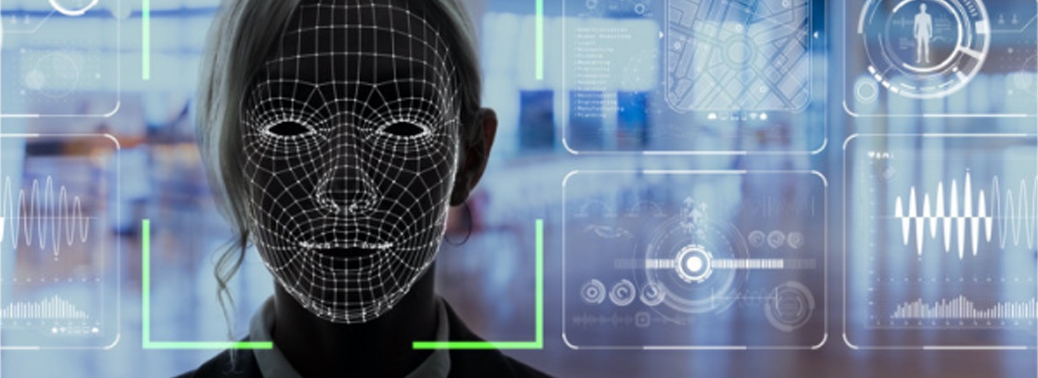
Why in News?
- Last week, European media network EURACTIV and Politico published a story that said the European Commission is considering a temporary ban on the use of facial recognition technologies in public spaces.
Highlights:
- Two big tech companies, Alphabet and Microsoft, have taken completely different positions on the idea.
- This comes even as facial recognition technologies are being increasingly adopted by individuals, organisations, and governments.
- European Commission believes that indiscriminate use of facial recognition technologies is a privacy threat, and some regulations are needed so that this does not easily give way to surveillance.
- During the temporary ban period, a sound methodology for assessing the impacts of this technology and possible risk management measures could be identified and developed.
Significance:
- It is increasingly being used for everything: from unlocking your phone to validating your identity, from auto-tagging digital photos to finding missing persons, and from targeted advertising to law enforcement.
- It is also increasingly used for surveillance and can also become problematic in the absence of privacy and data security laws.
Separating Benefits from Drawbacks:
- Benefits of facial recognition systems can be categorised into three. One, face detection, which could help count the number of people in traffic. Two, facial authentication, which could help you unlock your phone.
- Three, facial matching, which could help investigators quickly zero in on suspects.
- Instead of simply banning an entire category of technologies with so many possible applications, including many that are helpful and benign, policymakers should employ precision regulation that applies restrictions and oversight to particular use-cases and end-users where there is greater risk of societal harm.
Current Application Across the Globe:
- The U.S. has recently released guidelines regarding artificial intelligence, and they reportedly point to a light touch when it comes to regulation.
- London has joined the bandwagon, and will use real time facial recognition systems to police the city.
- Closer home, Telangana has recently tested this technology to verify voters in local elections.
ASTRONOMERS DECODE MILKY WAY’S VIOLENT BIRTH
25, Jul 2019

- Based on the data from the Gaia Space Observatory scientists say that Milky Way (our galaxy) merged with another smaller galaxy in a colossal cosmic collision roughly 10 billion years ago.
- The union of the Milky Way and the so-called dwarf galaxy Gaia-Enceladus increased our galaxy’s mass by about a quarter and triggered a period of accelerated star formation lasting about 2 to 4 billion years.
- Galaxies of all types, including the Milky Way, began to form relatively soon after the Big Bang explosion that marked the beginning of the universe some 13.8 billion years ago, but were generally smaller than those seen today and were forming stars at a rapid rate.
- Subsequent galactic mergers were instrumental in configuring galaxies existing now.
- High-precision measurements of the position, brightness and distance of around a million stars within 6,500 light years of the sun, obtained by the Gaia space telescope, helped pinpoint stars present before the merger and those that formed afterward.
- Certain stars with higher content of elements other than hydrogen or helium arose in the Milky Way, they found, and others with lower such content originated in Gaia-Enceladus, owing to its smaller mass.
- While the merger was dramatic and helped shape the Milky Way, it was not a star-destroying calamity.
NEUTRINO OBSERVATORY
14, Jul 2019
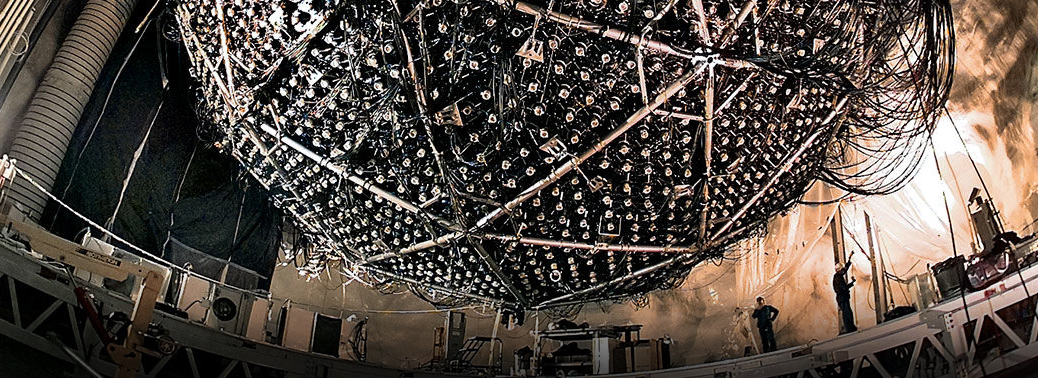
Why in News?
- The Government of India has approved a project to build the India-based Neutrino Observatory (INO) at Pottipuram in the Theni District of Tamil Nadu.
- The project aims to set up a 51000-ton Iron Calorimeter (ICAL) detector to observe naturally occurring atmospheric neutrinos in a cavern at the end of an approximately 2 km long tunnel in a mountain.
- This will help to reduce the noise from cosmic rays that is ever present over-ground and which would outnumber the rare neutrino interactions even in a detector as large as ICAL.
- India based Neutrino Observatory Project:
- The India-based Neutrino Observatory (INO) Project is a multi-institutional effort aimed at building a world-class underground laboratory with a rock cover of approx.1200 m for non-accelerator based high energy and nuclear physics research in India.
The Project Includes:
- Construction of an underground laboratory and associated surface facilities at Pottipuram in Bodi West hills of Theni District of Tamil Nadu,
- Construction of a Iron Calorimeter (ICAL) detector for studying neutrinos, consisting of 50000 tons of magnetized iron plates arranged in stacks with gaps in between where Resistive Plate Chambers (RPCs) would be inserted as active detectors
- Setting up of National Centre for High Energy Physics at Madurai, for the operation and maintenance of the underground laboratory, human resource development and detector R&D along with its applications. The underground laboratory, consisting of a large cavern and several smaller caverns, will be accessed by a 2100 m long and 7.5 m wide tunnel.
Objectives:
- The initial goal of INO is to study neutrinos.
- Neutrinos are fundamental particles belonging to the lepton family. They come in three flavours, one associated with electrons and the others with their heavier cousins the muon and the Tau.
- According to standard model of particle physics, they are mass less.
- However recent experiments indicate that these charge-neutral fundamental particles, have finite but small mass which is unknown.
- They oscillate between flavours as they propagate. Determination of neutrino masses and mixing parameters is one of the most important open problems in physics today.
- The ICAL detector is designed to address some of these key open problems in a unique way.
- Over the years this underground facility is expected to develop into a full-fledged underground science laboratory for other studies in physics, biology, geology, hydrology etc.
A NON-FLOWER, BUT JUST AS BRIGHT FOR INSECTS
13, Jun 2019

Why in News:
- Bengaluru researchers use art to study pollinators, show results at London’s Victoria and Albert Museum.
Background:
- Researchers from the National Centre for Biological Sciences (NCBS) here, who have co- published a study on why pollinators prefer some flowers over others, are turning to art to take their inquiry further.
- Recent studies point to an alarming decline in insect populations, making the study important. The scientists have teamed up with the Thomas Pausz Studio in an ‘art-as- science’ project that utilises art and design knowledge.
- This will help them develop better ways to attract dwindling pollinator populations.
- Their work is currently on display at the Victoria and Albert Museum (V&A) in London.
Colour or shape?
- Highly prolific pollinators found on every continent except Antarctica. Researchers replicated cues from flowers — colour, shape, size, odour — in the form of artificial flower lures.
- The team found some lures were attractive to hoverflies only in certain environments, but there was one flower lure that was attractive everywhere.
- “This was exciting as it suggested the possibility of a universal lure. We didn’t know which
cues were important – colour, odour, shape, or more,” she said. - The researchers approached artist Thomas Pausz at Srishti Institute of Art, Design and Technology to create the non-flower.
- To translate ideas, they used paper, films and UV light. The result is six ‘non-flower’ artefacts on show at the V&A alongside Virtual Reality films based on fractal geometries.
- “The structures echo scientists’ findings — pollinators prefer flowers with many edges,” said Mr. Pausz.. The actual artefacts were realised using a 3D printing machine
NEED FOR A LEGAL FRAMEWORK FOR AI IN INDIA
12, Jun 2019

Why in News:
- Artificial Intelligence-/AI-driven tech will become counterproductive if a legal framework is not devised to regulate it.
What are the recent developments?
- Recently, the Kerala police inducted a robot for police work.
- Around the same time, Chennai got its second robot-themed restaurant.
- Here, robots not only serve as waiters but also interact with customers in English and Tamil. In Ahmedabad, a cardiologist performed the world’s first in-human telerobotic coronary intervention on a patient nearly 32 km away.
- All these examples symbolise the arrival of Artificial Intelligence (AI) in everyday lives of human beings.
What are the global measures in this regard?
- Only recently, there has been interest across the world to develop a law on smart technologies.
- In the U.S., discussions are being taken up about regulation of AI.
- Germany has come up with ethical rules for autonomous vehicles.
- It stipulates that human life should always have priority over property or animal life.
- China, Japan and Korea are following Germany in developing a law on self-driven cars.
What is the need now in India?
- Traffic accidents lead to about 400 deaths a day in India, 90% of which are caused by preventable human errors.
- Autonomous vehicles that rely on AI can reduce this significantly, through smart warnings and preventive and defensive techniques.
- Patients dying due to non-availability of specialised doctors can be prevented with AI reducing the distance between patients and doctors.
- AI has several positive applications, as seen in the above examples.
- AI systems have the capability to learn from experience and to perform autonomously for humans.
- This also makes AI the most disruptive and self-transformative technology of the 21st century. So, if AI is not regulated properly, it is bound to have unmanageable implications.
- E.g. the consequence if electricity supply suddenly stops while a robot is performing a surgery and access to a doctor is lost
These questions have already confronted courts in the U.S. and Germany. - All countries, including India, need to be legally prepared to face such kind of disruptive technology.
What are the challenges involved?
- Predicting and analysing legal issues in regards with AI use and their solutions are not that simple. E.g. an AI-based driverless car getting into an accident that causes harm to humans or damages property. In such cases, criminal law may face drastic challenges as the party to be held liable is disputable.
How is the AI policy progress in India?
- In India, NITI Aayog released a policy paper, ‘National Strategy for Artificial Intelligence’, in June 2018.
- The paper considered the importance of AI in different sectors.
- The Budget 2019 also proposed to launch a national programme on AI.
- But notably, all these developments are taking place on the technological front.
- No comprehensive legislation to regulate this growing industry has been formulated in India till date.
- What should the priorities be?
- The first need is to have a legal definition of AI in place.
- It is essential to establish the legal personality of AI which means AI will have a bundle of rights and obligations, in the context of India’s criminal law jurisprudence.
- Since AI is considered to be inanimate,a liability scheme that holds the producer or manufacturer of the product liable for harm must be considered.
- Moreover, since privacy is a fundamental right, certain rules to regulate the usage of data possessed by an AI entity should be framed.
- This should be a part of the Personal Data Protection Bill, 2018.
IIT MADRAS DEVELOPS MATERIAL WITH PROPERTIES SUITABLE FOR QUANTUM OPTOELECTRONICS
02, Jun 2019

Why in News:
- Materials such as tungsten diselenide (WSe2) and molybdenum diselenide are being studied keenly for their opto-electronic properties – which is a combination of optics and electronics. A key property of these materials is photoluminescence, in which the material absorbs light and re-emits it as a spectrum.
- As a matter of fact, researchers from IIT Madras have found a way of enhancing this property about 30 times in tungsten diselenide, by drop-casting gold nanoparticles on to a two-dimensional film. The work is published in Applied Physics Letters.
Background: / Two-dimensional material:
- Consisting of practically one layer of atoms, these materials are two-dimensional in structure. Photoluminescence properties can be used in various devices such as quantum LEDs which can be used in communication and computation. Experts have opined that the most challenging aspect of this study was the controlled photoluminescence measurement of these materials from room temperature to 100 K. As is well known, electrons in semiconductors occupy bands of energy known as valence bands.
- As long as they live in these bands, they do not move and contribute to conduction.
- If excited by a small energy input, they get kicked into what is called the conduction band where they can actually be delocalised and contribute to the conduction by moving around.
Excitons:
- When an electron jumps from the valence to the conduction band, it leaves behind a shadow called a “hole.” The electron in the conduction band and the hole in the valence band can bind together and form a composite object (or pseudoparticle) known as an exciton. Photoluminescence in tungsten selenide is a result of such excitons.
- There can be two ways in which an exciton can form – when the spins of the component electron and hole are opposite to each other and when they are aligned in teh same direction. The former is called a bright exciton and the latter, a dark exciton.
- Because their spins are opposite, the electron and hole forming the bright exciton can recombine, giving out a quantum of light in the process. Such a simple way of recombining does not exist for the dark excitons. Since there, the spin of the electron and the hole are parallel, their recombination is discouraged by the rule of conservation of angular momentum. Hence the dark excitons are longer lived than the bright excitons. The dark excitons need an external influence to help them recombine.
- In their work, the IIT Madras researchers find exactly such an external influence.
The power of gold:
- When they drop-cast gold nanoparticles on the surface of the monolayer tungsten diselenide, they find that the dark excitons couple to the surface fields generated and recombine to give off light quanta. Thus, the dark excitons are “brightened” with the help of the gold nanoparticles.That plasmonic effect arises due to gold nanoparticles is a well- known concept. However, its application to 2D systems is in nascent stage.
- The scientists thought that if they drop-cast gold nanoparticles onto monolayer WSe2, then it will generate out-of-plane electric field due to plasmonic effect, which can help for spin-flip of conduction band electrons, thereby making dark excitons bright.
PASTA-LIKE ROCKS BEST BET FOR LIFE ON MARS: STUDY
31, May 2019

Why in News:
- Rocks on the surface of Mars that look like layers of pasta may be the most obvious sign of life on the Red Planet
Background: / Sulfurihydrogenibium yellowstonense:
- The bacterium that controls the formation of such rocks on the earth is ancient and thrives in harsh environments that are similar to conditions on Mars
- The bacterium belongs to a lineage that evolved prior to the oxygenation of Earth roughly 2.35 billion years ago.
- It can survive in extremely hot, fast-flowing water bubbling up from underground hot springs.
-
It can withstand exposure to ultraviolet light and survives only in environments with
extremely low oxygen levels, using sulphur and carbon dioxide as energy sources.
FULL CIRCLE: ON THE CHANGE IN KILOGRAM’S DEFINITION
25, May 2019

Why in News:
- The kilogram joined a bunch of other units— second, metre, ampere, kelvin, mole and candela — that will no longer be compared with physical objects as standards of reference
Details:
- The change comes after nearly 130 years: in 1889 a platinum-iridium cylinder was used to define how much mass one kilogram represented.
- Now, a more abstract definition of the kilogram has been adopted in terms of fundamental constants, namely, the Planck’s constant h, and the metre and second which already have been defined in terms of universal constants such as the speed of light.
- Now, by using a Kibble balance, which balances mass against electromagnetic force, to measure the mass of an unknown piece, the very methodology of verification has been altered.
- The constants involved are known precisely and are universal numbers. Hence, whether the mass is measured on earth or, say, on the moon, it can be determined with precision.
- In 1791, 1 kg was defined as the mass of one litre of distilled water at its melting point.
- In 1799, the kilogram came to be defined using a cylinder of platinum – the first time an artefact was used for this purpose. But it was also defined as equivalent to the mass of one litre of distilled water at atmospheric pressure and at about 4 degrees
- Celsius, the temperature at which water has the maximum density.
- This was done away with in 1889 when the community adopted the International Prototype of the Kilogram — a cylinder made of an alloy that’s 90% platinum and 10% iridium. The reference to the ‘physical constant’, i.e. mass of one litre of water, was abandoned
- Now, as a culmination of this historical process, we come back full circle and find that the kilogram is defined again in terms of a fundamental physical constant — the Planck’s constant. Planck’s constant is a robust number to match. Not until the art of travelling at relativistic speeds, close to the speed of light, is mastered, will we have to redefine these abstract definitions.
General Conference on Weights and Measures (CGPM)
- General Conference on Weights and Measures (CGPM) is the highest international body of the world for accurate and precise measurements and comprises of 60 countries including India and 42 Associate Members.
KILOGRAM UPDATE TO SPUR REVISION OF TEXTBOOKS
21, May 2019
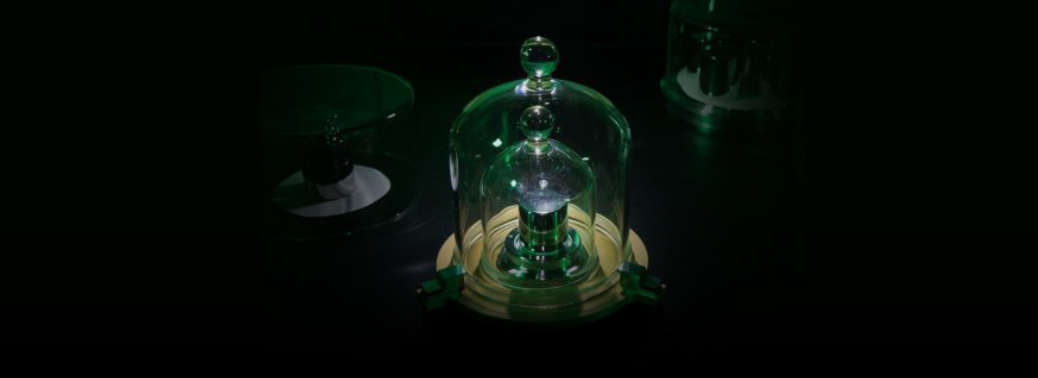
Why in News:
- With the definition of the ‘kilogram’ getting a global, technical makeover, textbooks are set to undergo an update.
Background
-
Since the 19th century,scientists have based their definition of the fundamental unit of mass on a physical
object — a shining platinum-iridium cylinder or Le Grand K (weighed exactly a kilogram) known as the International Prototype of the Kilogram. - It is housed at the headquarters of BIPM in Sevres, France.
- All modern mass measurements are derived from the kilogram, whether micrograms of pharmaceutical medicine or gold dust, kilos of fruit or fish or tonnes of steel.
- The problem is the prototype doesn’t always weigh the same. Even inside its three-glass bell jars it picks up microparticles of dirt and is affected by the atmosphere. Sometimes it needs cleaning, which can affect its mass.
New Concepts:
- Since 1967, the second has been defined as the time it takes for a certain amount of energy to be released as radiation from atoms of Caesium-133. This became the basis of all measures of time and is used in atomic clocks.
- Once the second was defined, the metre fell into place. This was based on another universal constant: the speed of light. Today, the metre is defined as the distance travelled by light in vacuum in 1/299,792,458 of a second (which is already defined).
- The kilogram comes next. The Planck constant, which Kilogram is based on, is usually measured in joule seconds, but this can also be expressed as kilogram square metres per second.
- By adding measurements of a second and a metre, along with an exact knowledge of
Planck’s constant, precise definition of the kilogram can be obtained. - The CSIR-NPL, which is India’s official reference keeper of units of measurements, released a set of recommendations requiring that school textbooks, engineering-education books, and course curriculum update the definition of the kilogram.
- The institute is also in the process of making its own ‘Kibble Balance’, a device that was
used to measure the Planck Constant and thereby reboot the kilogram - The National Physical Laboratory itself will be relying on the kilogram maintained in the U.S.-based National Institutes of Standards and Technology to calibrate its one-kilogram weight.
Deep Ocean Mission
21, Jul 2018
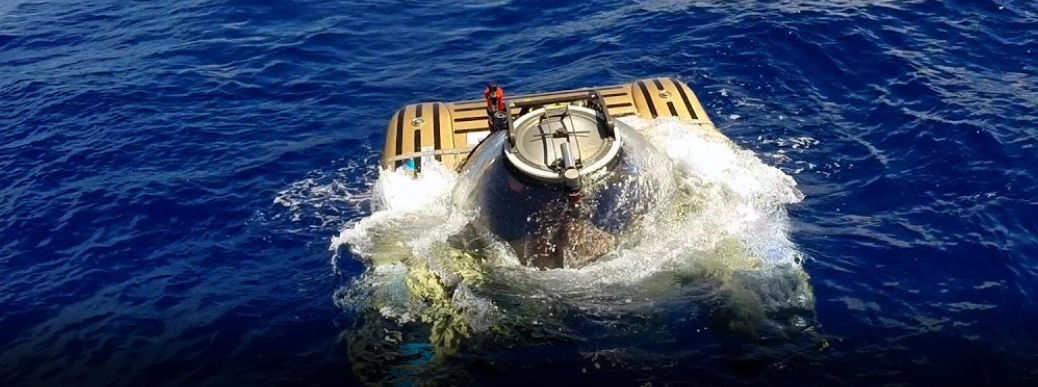
The Centre has drawn up a five-year plan to explore the deep recesses of the ocean. The mission proposes to explore the deep ocean similar to the space exploration started by ISRO.
About the mission:
- The mission is to explore and harness mineral resources beneath the ocean floor which intended to harness ocean resources in a “responsible way” and could turn out to be a transformative step for the prosperity and security of the nation.
- The focus will be on technologies for deep-sea mining, underwater vehicles, underwater robotics and ocean climate change advisory services, among other aspects.
- This will improve India’s position in ocean research field.
- The Exclusive Economic Zone allotted to India in the international waters will be covered under the Deep Ocean Mission.
- The Union Earth Sciences Ministry tasked with coordinating the exercise.
Resources from Ocean:
Energy from the Ocean:
Ocean can produce two types of energy: thermal energy from the sun’s heat, and mechanical energy from the tides and waves. The fact that the marine renewable sector is less developed than other energy sectors.
Tidal Energy:
- Tidal power converts the energy from the natural rise and fall of the tides into electricity.
- Since India is surrounded by sea on three sides, its potential to harness tidal energy has been recognized by the Government of India.
The most attractive locations for tidal energy are:
- Gulf of Cambay
- Gulf of Kachchh
- Ganges Delta in the Sunder bans
Problems Faced in Exploiting Tidal Energy:
- The altering of the ecosystem at the bay
- Only provides power for around 10 hours each day, when the tide is actually moving in or out.
- Present designs do not produce a lot of electricity, and barrages across river estuaries can change the flow of water and, consequently, the habitat for birds and other wildlife
- Limited construction locations
- Barrages affect fish migration and other wildlife- many fish like salmon swim up to the barrages and are killed by the spinning turbines.
- Barrages may affect the tidal level – the change in tidal level may affect navigation, recreation, cause flooding of the shoreline and affect local marine life
- Tidal plants are expensive to build
Wave Power:
- Wave power systems convert the motion of the waves into usable mechanical energy which in lump can be used to generate electricity.
- The potential along the 6000 Km of coast is about 40,000 MW. This energy is however less intensive than what is available in more northern and southern latitudes.
- Primary estimates indicate that the annual wave energy potential along the Indian coast is between 5 MW to 15 MW per meter, thus a theoretical potential for a coast line of nearly 6000 KW works out to 40000-60000 MW approximately. However, the realistic and economical potential is likely to be considerably less.
- Offshore desalination plants powered by renewable energies are being proposed as an alternative for a coastal desalination facility, for those locations where the lack of suitable land makes a land-based desalination plant inadequate
- The sole energy source of a reverse osmosis (RO) plant is utilised through wave or tidal energy in order to produce drinkable water, which is then transported offshore (through pipes, water tank ships, or bladders
Problems in wave energy generation:
- Depends on the waves – variable energy supply
- Needs a suitable site, where waves are consistently strong
- Must be able to withstand very rough weather
- Poses a possible threat to navigation from collisions due to the low profile of the wave energy devices above the water, making them undetectable either by direct sighting or by radar May interfere with mooring and anchorage lines with commercial and sport-fishing
- May degrade scenic ocean front views from wave energy devices located near or on the shore, and from onshore overhead electric transmission lines.
Ocean Thermal Energy:
- The main objective of ocean thermal energy or Ocean Thermal Energy Conversion (OTEC) is to turn the solar energy trapped by the ocean into useable energy.
- OTEC has a potential installed capacity of 180,000 MW in India
Barriers in OTEC:
- OTEC-produced electricity at present would cost more than electricity generated from fossil fuels at their current costs.
- OTEC plants must be located where a difference of about 40 degrees Fahrenheit occurs year round.
- Ocean depths must be available fairly close to shore-based facilities for economic operation.
- Construction of OTEC plants and laying pipes in coastal waters may cause localized damage to reefs and near-shore marine ecosystems.
Mineral Resources:
- Exploration for offshore petroleum and Natural gas also has been under way in the Arabian Sea and the Bay of Bengal, both of which are believed to have large reserves.
- The sea offers a variety of minerals, many of which are considered to be alternative sources of metals in the future.
- Among these are the placer deposits, which are mechanically concentrated minerals that originate from eroded onshore rocks. The near-shore waves separate the minerals brought by rivers and glaciers into heavy and light minerals, and concentrate heavy minerals on the beaches and estuaries.
- Elements in native state (diamond, gold, and platinum) or minerals such as ilmenite, rutile, magnetite, zircon, monazite, garnet, and corundum are some examples of placer deposits.
- Oolites are the inorganic chemical precipitates of calcium carbonate that form in hyper-saline, shallow marine environment (<10 m). Oolites are found on the continental shelf off Mumbai, Visakhapatnam, and Chennai. Zeolites, Phosphorites or sedimentary phosphate, Barite are the other minerals.
- Ferro-manganese deposits form in the deep ocean basins (4-5 km depth) in areas away from the influence of terrigenous (from land) fluxes. They occur as nodules (round objects upto 10 cm in size) and encrustations (as layers on rocks exposed on the seafloor). They have copper, nickel, and cobalt (total 2.5%) content.
- Manganese nodules grow at a rate of 1-3 mm per million years and occur on the ocean floor or a few centimetres below it. Crusts with high cobalt content (0.25% – 1%) usually occur on seamounts, elevated marginal areas, and mid-ocean ridges.
- Hydrothermal deposits are formed by the interaction of seawater with submarine volcanic activity.
- Gas hydrates are compounds where gas molecules are physically trapped inside an expanded lattice of water molecules. They can be present below the ocean floor on the continental slopes and deeper areas of high rate of deposition of sediments with moderate organic content (0.5%).
- Seabed gas hydrates could be an energy source of the future.
Living Resources:
- The Indian Ocean’s living resources represent one of the region’s most significant assets. According to the United Nations Food and Agriculture Organization (FAO), catches from Indian Ocean marine capture fisheries have soared from less than 900,000 tonnes in 1950 to 11.3 million tonnes in 2010, about 14.6 percent of the world catch.
- Aquaculture – farming fish, shellfish, and other aquatic animals in captivity – has expanded equally rapidly, growing twelve-fold globally since 1980.
- In 2010, six Indian Ocean nations – India, Indonesia, Bangladesh, Thailand, Egypt, and Myanmar – counted among the top ten producers worldwide, supplying over 11.3 million tonnes of fish between them, as much as all the region’s capture fisheries combined.
India to Expand Polar Research to Arctic:
11, Jul 2018
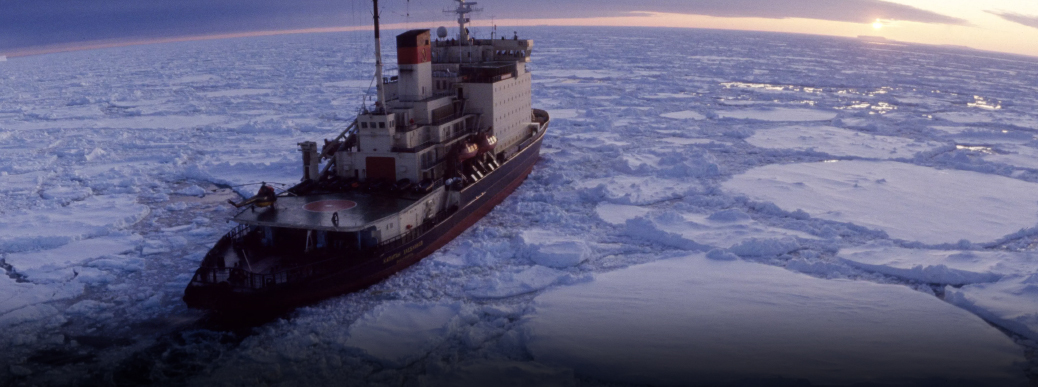
The government is refocusing priorities to the Arctic because of opportunities and challenges posed by climate change
Background:
- Sea ice at the Arctic has been melting rapidly — the fastest in this century. That means several spots, rich in hydrocarbon reserves, will be more accessible through the year via alternative shipping routes.
- This month, India has renamed the National Centre for Antarctic and Ocean Research (NCAOR) charged with conducting expeditions to India’s base stations to the continent as the National Centre for Polar and Ocean Research.
India’s Artic Expedition:
- India’s interests in the Arctic region are scientific, environmental, commercial as well as strategic.
- India has no published “Arctic policy”. India’s Arctic work comes under the ambit of the National Centre for Antarctic and Ocean Research (NCAOR), an autonomous research institute under the umbrella of the Ministry of Earth Sciences.
- India has one Arctic observation station near Norway. India opened an Arctic research base at Ny-Alesund, Svalbard, Norway -“Himadri” – to pursue research in Glaciology, Atmospheric Sciences, and Biological Sciences.
- India began its engagement with the Arctic region when it signed the Svalbard Treaty in February 1920.
- In 2007 India began its Arctic Research Program, focusing on climate change.
- The Indian Arctic research team hopes to understand the relation between the Arctic climate and the Indian monsoon by analysing sediment and ice core records from Arctic glaciers and the Arctic Ocean.
- In 2002, the state-owned ONGC Videsh (OVL) bought a 20 percent stake in the Sakhalin-I project on Sakhalin Island in the Russian sub-Arctic North Pacific.
- Scientists across the world are reporting that the rapid ice-melt in the Arctic is leading to large quantities of fresh water into the seas around the poles. This impedes the release of heat from the water and directs warm water into the seas around India, the theory goes, and eventually weakens the movement of the monsoon breeze into India. Therefore we need more observations and stations in the Arctic countries to improve understanding of these processes.






